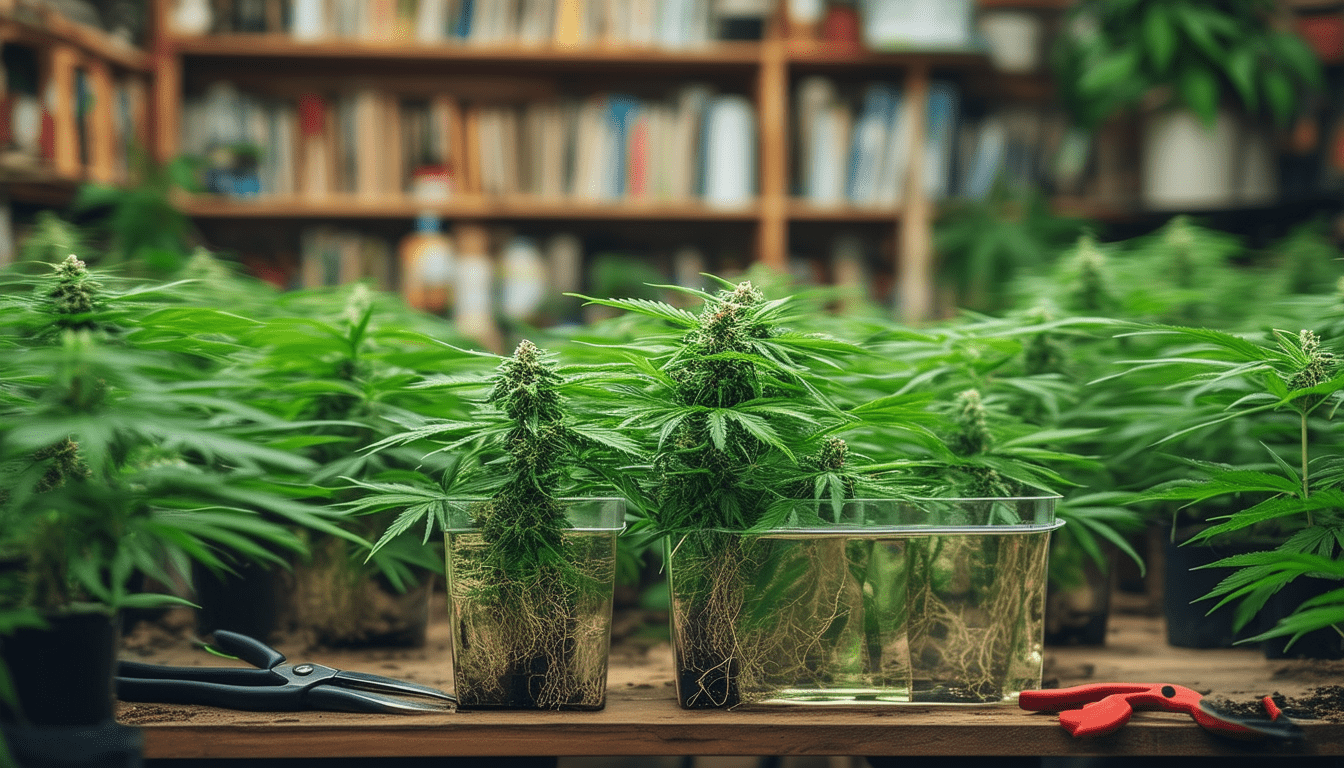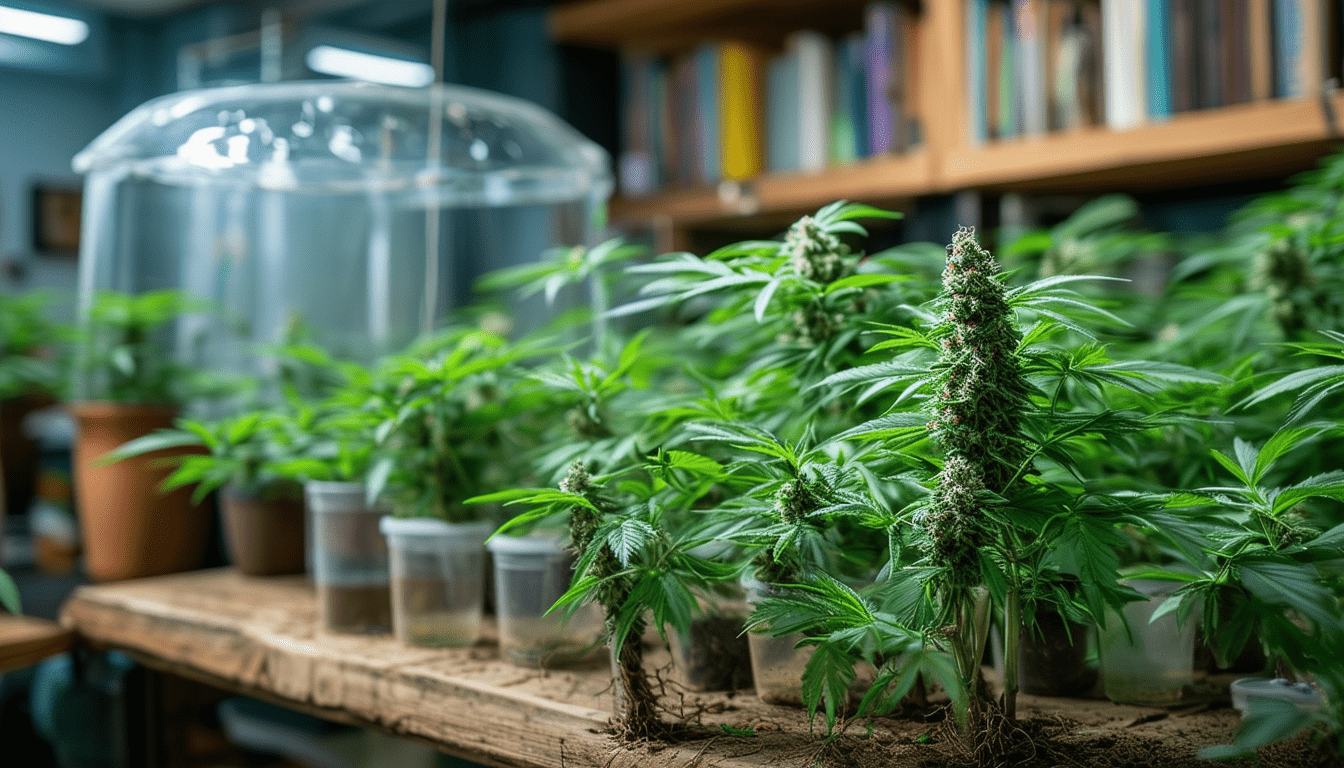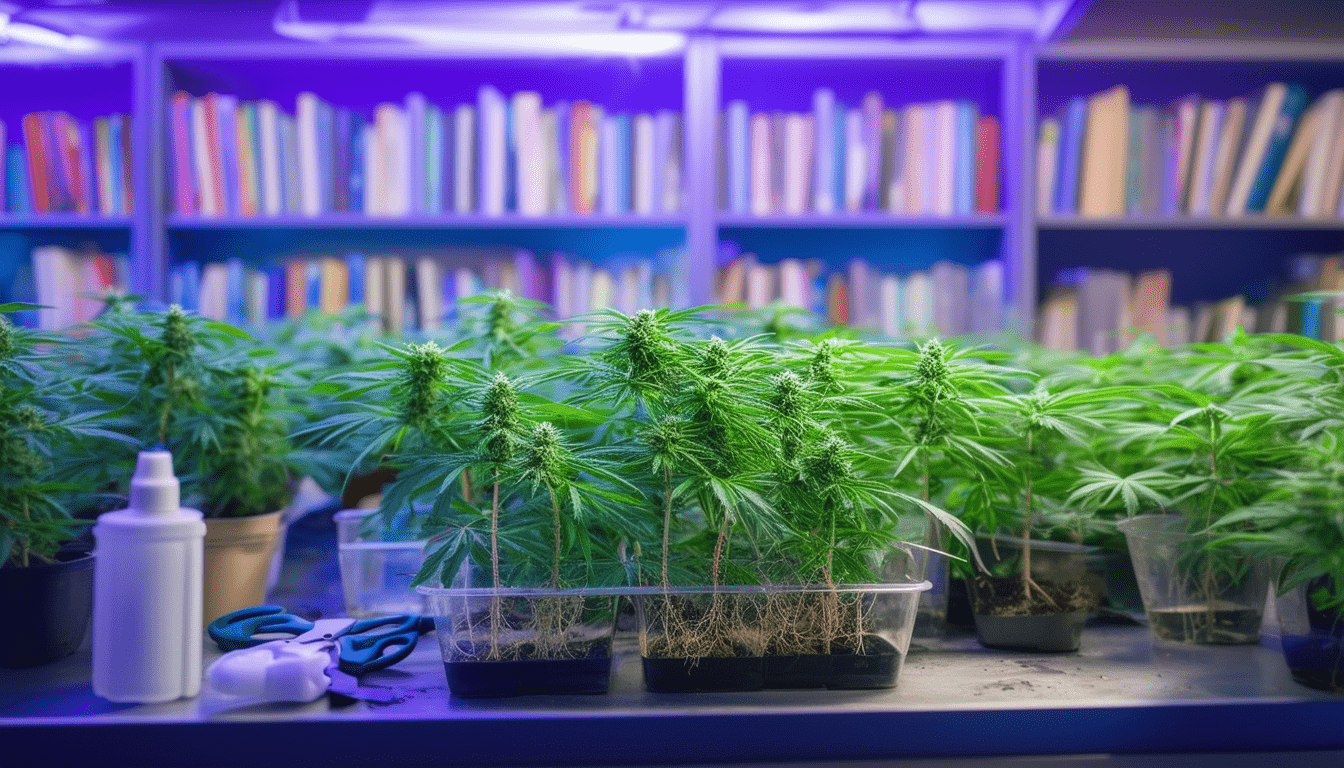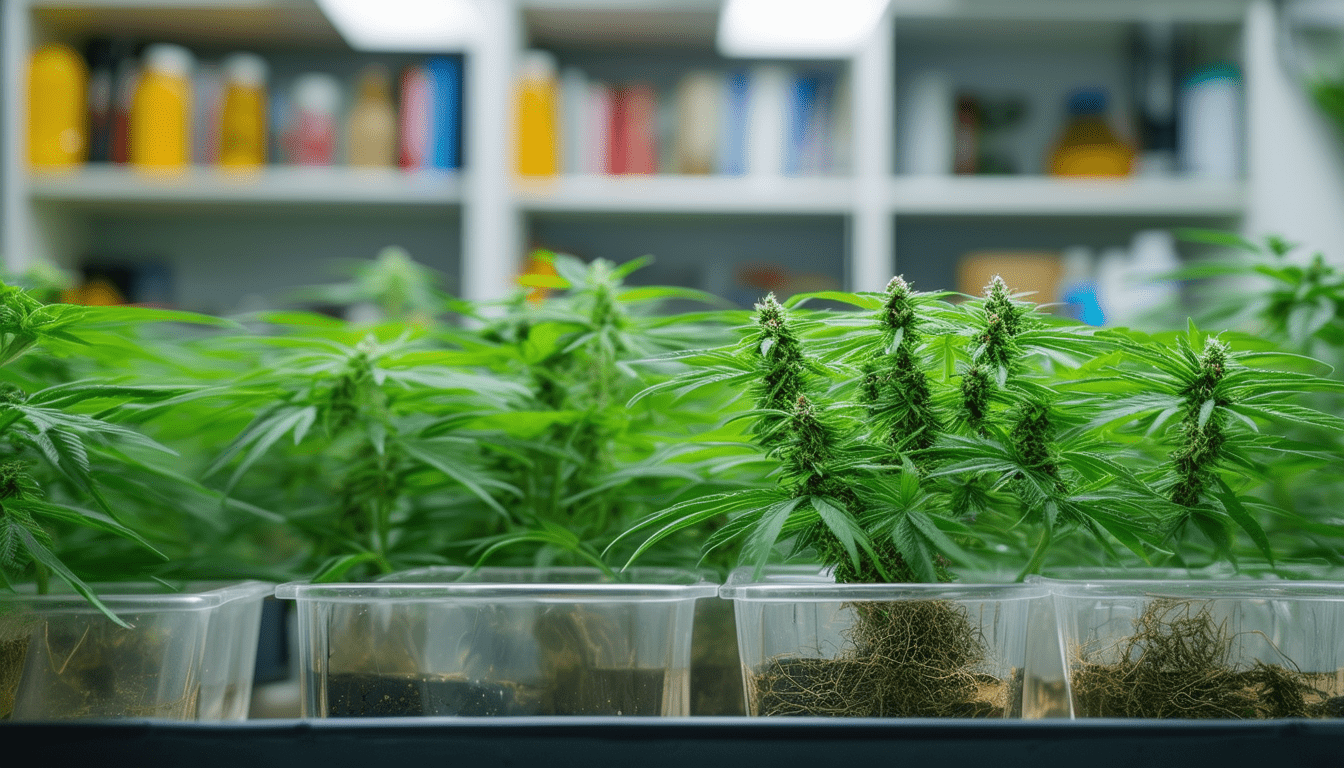Understanding cannabis cloning: a comprehensive guide
|
IN BRIEF
|
Cannabis cloning is an essential technique for growers looking to replicate their best plants and ensure genetic consistency. This comprehensive guide will unveil the intricacies of the cloning process, exploring its significance in horticulture and the advantages it offers to both novice and seasoned cultivators. By mastering this method, growers can enjoy better pest control, achieve uniformity in their crops, and maintain the unique traits of their most cherished strains. With a step-by-step approach, this guide aims to provide invaluable insights into successfully cloning cannabis plants, making it accessible and engaging for anyone interested in the art of propagation.

Cannabis cloning is an essential technique for growers aiming to propagate their favorite strains while ensuring genetic consistency and optimal plant health. This comprehensive guide will provide detailed insights into the cloning process, focusing on the steps involved, necessary tools, and best practices to master the art of cannabis cloning.
The Importance of Cloning Cannabis
Cloning cannabis serves multiple purposes. Firstly, it allows for the production of genetically identical plants, helping growers maintain the unique characteristics of their preferred strains. Secondly, cloning can facilitate better pest control and disease management, as clones can be produced from healthy mother plants. This method is especially valuable for those looking to create a reliable supply of high-quality cannabis buds.
Selecting the Mother Plant
A crucial step in the cloning process is choosing the right mother plant. The mother should exhibit strong characteristics such as vigorous growth, high cannabinoid content, and resistance to pests and diseases. It’s advisable to select a plant that is mature but not too old; ideally, it should be between five to eight weeks into the vegetative stage. By doing so, you will ensure that the clones are healthy and robust.
Preparing the Tools and Medium
Before taking cuttings, proper preparation is key. Gather the necessary tools, including sharp sterilized scissors or a razor blade, cloning gel or powder, and a planting medium such as rock wool, soil, or peat pellets. It’s also important to have a humidity dome or a greenhouse environment to help maintain moisture levels for the newly cuttings. The right medium will provide adequate support and nourishment for the clones during their initial growth phase.
Taking the Cuttings
Once your tools and medium are ready, it’s time to take cuttings from the selected mother plant. Choose healthy branches that are at least 4-6 inches long. Make your cut just below a node, as this is where new roots are likely to emerge. After taking the cuttings, remove any excess leaves to reduce transpiration and ensure that the plant’s energy is focused on root development.
Applying Rooting Hormones
To enhance the success rate of your clones, applying a rooting hormone is recommended. This can be in the form of gel, powder, or liquid solutions that stimulate root growth. Dip the cut end of each cutting into the rooting hormone before placing it into your chosen medium. This step not only accelerates the rooting process but also helps protect the cutting from pathogens.
Creating an Ideal Environment
After placing the cuttings into the medium, it’s crucial to maintain a conducive environment for rooting. This involves controlling elements such as humidity, temperature, and light. A humidity dome or propagator can help retain moisture, while temperatures should be kept between 70-78°F (21-26°C). Providing dimmed light can encourage rooting without stressing the young clones.
Monitoring Clone Growth
Regularly monitor progress during the rooting phase, typically lasting one to three weeks, depending on the strain and conditions. Look for signs of new growth, such as small leaves emerging from the cutting, which indicates healthy root development. Be cautious not to overwater the clones, as this can lead to rot and prevent rooting.
Transplanting Clones
Once the clones have developed a strong root system, it’s time for transplanting. Carefully remove the clones from their original medium, handling them with care to avoid damaging the roots. Transfer them to larger pots filled with appropriate soil or growing medium. Allow them to acclimate to their new environment, gradually introducing them to more light over time.
Cloning Cannabis: Tips and Best Practices
To summarize, successful cannabis cloning requires attention to detail and a systematic approach. Here are some quick tips: Always sterilize your tools to prevent disease transmission, closely monitor moisture and humidity levels, and be patient during the rooting process. For more information and advanced techniques, consider exploring resources like the Mastering the Art of Cannabis Cloning guide and the Ultimate Guide to Cannabis Cloning.
By mastering cannabis cloning techniques, growers can ensure a consistent and high-quality yield while enjoying the process of nurturing their favorite strains. For comprehensive details on the cloning process, feel free to check out the Complete Cannabis Cloning Guide and other relevant sources like Extrakt Lab’s on cloning cannabis.
As you delve deeper into the world of cannabis cloning, you will uncover a wealth of techniques that can enhance your growing experience. For a well-rounded understanding, don’t miss the article from the Merced Sun-Star.
Understanding Cannabis Cloning: Key Aspects
| Aspect | Details |
| Purpose | Propagation of genetically identical cannabis plants. |
| Mother Plant | Healthy, mature plants best for cloning. |
| Tools Needed | Clean scissors, rooting hormone, and a growing medium. |
| Process Steps | Select, cut, prepare, and nurture the clones. |
| Cloning Techniques | Methods include traditional and aeroponic cloning. |
| Ideal Conditions | Maintaining humidity and temperature is crucial. |
| Timeline | Clones typically take 1-2 weeks to root. |
| Benefits | Consistent genetics, pest resistance, and quicker harvest. |

Cannabis cloning is a vital technique for both commercial and personal growers aiming for genetic consistency and plant health. This guide explores the essentials of cloning, offering you the tools and knowledge needed to successfully replicate your favorite cannabis strains. From selecting the right mother plant to the intricacies of nurturing clones, this guide walks you through every step of the process.
The Importance of Cloning Cannabis
Cloning cannabis allows growers to produce genetically identical copies of their plants, which ensures that the characteristics of the original strain are preserved. This method not only maintains the desired traits, such as flavor and potency, but also aids in ensuring better pest control. By utilizing cloning techniques, growers can enjoy a more reliable growing process with predictable outcomes.
Selecting the Right Mother Plant
The foundation of successful cloning begins with choosing the right mother plant. An ideal mother should exhibit robust health, vibrant growth, and no signs of disease or pests. The best time to select a mother plant is during its vegetative phase, where it showcases consistent vigor and desirable traits. Understanding the characteristics of potential mothers will play a pivotal role in the success of your future clones.
Preparing Your Tools and Medium
Before diving into the cloning process, it’s crucial to gather the appropriate tools and select the right growth medium. You will need a sharp, sterile cutting tool, rooting hormone, a cloning tray, and a high-quality growing medium—such as Rockwool, peat pellets, or soil. The choice of medium can significantly affect root development, making this preparation stage essential for successful cloning.
Taking Cuttings
The art of cloning begins with taking cuttings from the mother plant. It’s advisable to select healthy stems and to perform the cut at a 45-degree angle to increase the surface area for rooting. After taking the cuttings, immerse the cut end in rooting hormone to promote rapid root development. This step is critical, as it encourages the plant to redirect energy towards root formation rather than other functions.
Applying Rooting Techniques
Once the cuttings are prepared, it’s essential to place them in conditions that encourage rooting. Utilizing a humidity dome can help maintain moisture levels, while a warm and well-lit environment aids in the overall success of the process. Regularly check the cuttings for signs of stress or wilting, and be ready to adjust the conditions as needed to optimize their growth.
Nurturing and Caring for Your Clones
After the initial rooting phase, it’s time to focus on nurturing your young clones. Monitoring their health closely is vital—providing appropriate water and nutrients while avoiding overwatering can make or break their success. Understanding the specific needs of your clones during their early growth stages will ensure that they develop into strong and healthy plants.
In summary, cloning cannabis presents a rewarding opportunity for growers. By understanding the importance of selecting an appropriate mother plant, preparing the necessary tools and mediums, and nurturing your clones effectively, you can enjoy a successful cannabis cultivation journey. For more detailed strategies on cloning and to explore advanced techniques, consider visiting comprehensive resources like this guide, this step-by-step article, or this farmer’s guide.
- Mother Plant Selection: Choose a healthy and robust plant.
- Tools Preparation: Gather necessary equipment like scissors and a rooting medium.
- Taking Cuttings: Cut stems at a 45-degree angle for optimal growth.
- Rooting Hormone Application: Dip cuttings in rooting hormone to encourage root development.
- Humidity Maintenance: Cover clones to retain moisture during the initial phase.
- Lighting Conditions: Provide appropriate light to stimulate growth without burning the clones.
- Patience and Observation: Monitor clones regularly for signs of growth or distress.
- Transplanting: Transfer clones to larger pots once rooted for further growth.

Understanding Cannabis Cloning: An Overview
Cannabis cloning is a crucial technique for growers aiming to replicate their most beloved strains. By creating genetically identical copies, or clones, growers can ensure genetic consistency and more effectively manage pest issues. This comprehensive guide delves into the essentials of cannabis cloning, offering structured steps and expert insights to help both novices and experienced cultivators master the art of cloning.
Selecting the Mother Plant
The first step in the cloning process is selecting a healthy mother plant. This plant will serve as the source of your clones, so it’s vital that it displays desirable traits such as vigor, yield, and resistance to diseases. Ensure that the mother plant has been grown from seeds or clones itself and ideally has reached maturity, around two to three months old. A robust and actively growing mother will provide the best cuttings for successful cloning.
Preparing Tools and Medium
Once you’ve selected your mother plant, it’s time to gather the necessary tools. Essential items include clean, sharp scissors or a razor blade, rooting hormone, small pots, and a suitable growing medium. Many growers prefer using a soil medium that allows for good drainage, while others may opt for soilless options like rock wool or coco coir. Whichever medium you choose, ensure it’s well-aerated and sterile to promote healthy root development.
Taking the Cuttings
With your tools ready and your mother plant selected, the next step is to take the cuttings. Identify healthy stems on the mother plant and cut a section about 4-6 inches long. Each cutting should have at least two nodes, as these will be where roots eventually develop. After making the cut at a 45-degree angle, immediately place the cutting in a glass of water to prevent air from entering the stem. Once all cuttings are taken, dip the cut end into rooting hormone, which encourages root growth and minimizes the risk of rot.
Applying Rooting Techniques
After preparing your cuttings, gently place them into your chosen growing medium. It’s important to ensure that the cut ends are buried adequately but that the leaves are above the surface. Once all cuttings are in place, mist the surface to maintain humidity, and cover them with a humidity dome or a clear plastic bag to lock in moisture. Maintaining a warm environment (around 70-80°F) will help optimize rooting. Keep an eye on the clones, as they should develop roots within 1-3 weeks, depending on environmental conditions.
Care for Your Clones
Caring for your clones involves monitoring humidity, temperature, and light. Make sure to regularly mist the clones and keep the humidity levels high. After roots begin to develop, typically when you see new growth, you can gradually introduce them to a more open environment. When caring for clones, be attentive to the signs of stress, such as yellowing leaves or wilting, and adjust conditions accordingly.
Mastering Advanced Techniques
For those looking to elevate their cloning skills, mastering advanced techniques like tissue culture or utilizing aeroponics can offer increased efficiency and higher success rates. These methods require more specialized knowledge and equipment but can yield superior results when executed correctly. By expanding your understanding of these techniques, you can optimize your cloning process and achieve better growth outcomes.


Post Comment